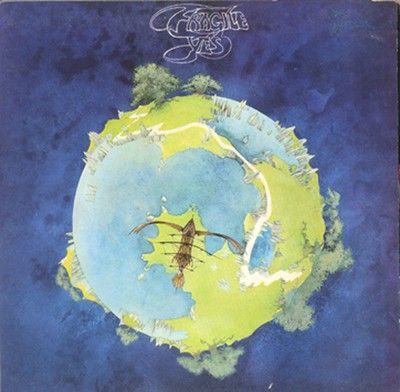 Hot Stamper Pressings of the Music of Yes Available Now
Hot Stamper Pressings of the Music of Yes Available Now
Reviews and Commentaries for Close to the Edge
On the Difficulty of Reproduction scale, this record scores fairly high. You need lots of tubey magic and freedom from distortion, the kind of sound I rarely hear on any but the most heavily tweaked systems. The kind of systems that guys like me have been slaving over for thirty years.
If you’re a Weekend Warrior when it comes to stereo, this is not the record for you.
It took a long time to get to the point where we could clean the record properly, twenty years or so, and about the same amount of time to get the stereo to the level it needed to be, involving, you guessed it, many of the Revolutionary Changes in Audio we tout so obsessively. It’s not easy to find a pressing with the low end whomp factor, midrange energy and overall dynamic power that this music needs, and it takes one helluva stereo to play one too.
If you have the kind of big system that a record like this demands, when you drop the needle on the best of our Hot Stamper pressings, you are going to hear some amazing sound .
Even our Hottest Stamper copies can sound problematical unless your system is firing on all cylinders. Your electricity has got to be cooking, you’ve got to be using the right room treatments, and ideally you should be using a demagnetizer such as the Talisman on the record itself, your cables (power, interconnect and speaker) as well as the individual drivers of your speakers.
This is a record that’s going to demand a lot from the listener, and we want to make sure that you’re up to the challenge. If you don’t mind putting in a little hard work, here’s a record that will reward you many times over, and probably teach you a thing or two about tweaking your gear in the process.
We’d started and abandoned this shootout multiple times in the previous decade; the typical sounding copy was just too painful to listen to, and the better pressings weren’t doing what we had hoped they would. Where was the Tubey Magical analog sound with the HUGE whomp factor that we’d been hearing on the best copies of Fragile and The Yes Album? We just could not find that sound on Close to the Edge.
As futile as our previous attempts were, we decided in 2008 that we would take another stab at it. After all, there had been quite a few changes around here that had the stereo working really well — the addition of the Odyssey Record Cleaning Machine and Walker Enzyme solution to our cleaning process, the Talisman Magnetic Optimizer, the third pair of Hallographs we added years back, tons of smaller tweaks, and a few other tricks that we’re going to have to leave hidden up our sleeves for now.
The Planets Align
Think about it: This is a highly COMPLEX recording, with HUGE organs, light-speed changes, lots of multi-tracking, and what amounts to an OVERLOAD of musical information. Can you imagine how irritating that would sound on a third-rate copy? We didn’t have to imagine it — we lived through it!
But that’s exactly what made the shootout so rewarding. We had finally gotten the sound we were searching for from Close To The Edge, although it was anything but easy. The toughest peaks to climb are the ones you feel the best standing at the top of, and I have no doubt that many of you will be able to get there, just as we did, as long as you’re willing to work for it. (We humbly suggest you follow our lead. As we like to say, what works for us can work for you.)
If It Doesn’t Blow You Away…
Send it back, we’ll return all your money. We understand that it’s entirely possible that you won’t be able to unlock the magic in the grooves that we were able to hear. (We failed too, remember? More than once in fact.)
We put a lot of time and energy into getting everything just right for our shootouts, and to hear the album sound amazing you’re going to have to do the same. If it doesn’t all come together and our Hot Stamper Close to the Edge leaves you cold, feel free to send it back for a full refund. That’s always our policy, but we wanted to stress it in regards to this album, because it is VERY difficult to reproduce. (Big speakers are pretty much a must on this one as well.)
And it should be noted that there is distortion on the tape. It’s on every LP copy and it’s on the CD too. There are cacophonous passages that have what sounds like board overload, mic preamp overload, tape saturation or some combination of all three.
 More of the Music of Emerson, Lake and Palmer
More of the Music of Emerson, Lake and Palmer






 But they absolutely love that $17,500 cartridge and are dying to own one.
But they absolutely love that $17,500 cartridge and are dying to own one.
